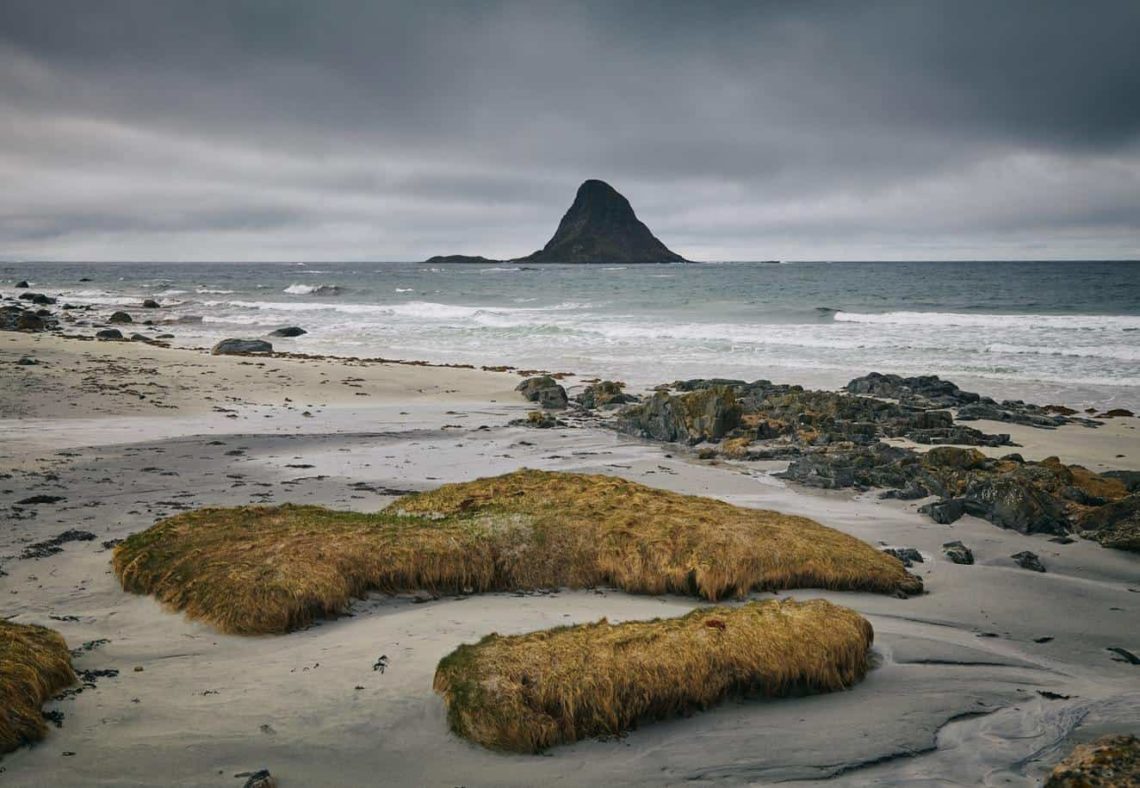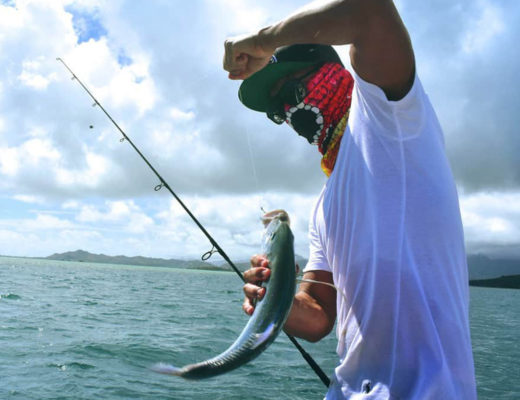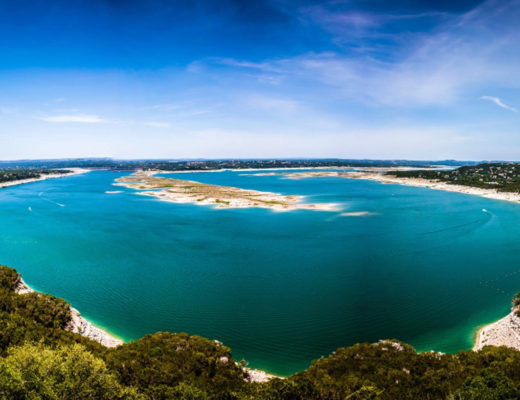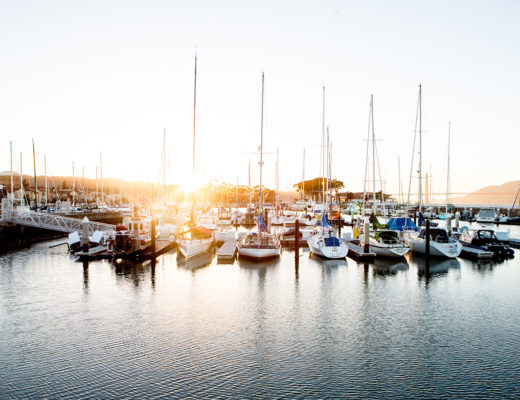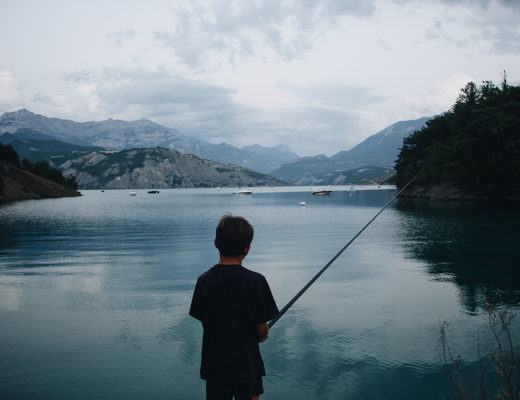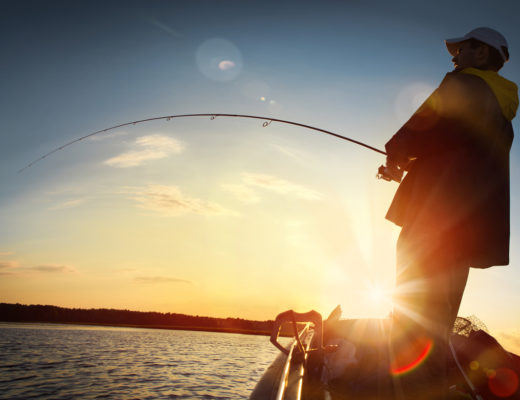The History of Fishing
Imagine fishing in 24 hours of daylight under the glowing Arctic sun. Imagine fast flowing rivers, the cleanest lakes on earth and the rugged coastline of the Arctic Ocean. Nunavut offers a vast variety of exciting opportunities for fishing. Enjoy arctic char runs near the soaring peaks of Cumberland Sound in the Baffin region. There are spectacular fly-fishing opportunities on the Coppermine River in Kugluk/Bloody Falls Territorial Park. Take fly-in canoe trips along the Kivalliq region’s many bountiful river systems. Nunavut offers plenty of options for the avid angler.
For generations the Inuit have been catching various species of marine life in imaginative ways. Traditionally, they fished using weirs called saputis. These fish traps were created in rivers and streams by using rocks to build a V-shaped funnel into a closed-off pond. This is where fish could be caught by hand or speared with three-pronged fishing spears known as kakivaks.
Popular fishing towns and parks in Nunavut
Nunavut offers a vast number of options for avid anglers. Here are a few of the places that draw fishermen and women to the territories’ waters every year.
- Naujaat (Repulse Bay)
- Auyuittuq National Park
- Sirmilik National Park
- Ellesmere Island
- Pond Inlet
- Cunningham Inlet (Somerset Island)
- Iqalugaarjuup Nunanga Territorial Park
- The Northwest Passage
Within a remote and rugged landscape, Nunavut promises the fishing trip of a lifetime. With up to 24 hours of daylight, casting for trophy-sized pike and arctic grayling is uninterrupted by darkness. Today fishing lodges and full-service communities are spread throughout Nunavut. From below the tree-line to the ice-gripped rock and gravel of the northern islands. Nunavut provides anglers with true adventure in a land like nowhere else on earth.
Here are a few of the fish species available to anglers in Nunavut.
Arctic Char
The Arctic char (Salvelinus alpinus) belongs to the salmon family and generally have a dark green back which shades to silvery sides and belly. There are pinkish spots on the sides. In its spawning colors the arctic char displays ivory-tipped blood-red fins, crimson belly and greenish flanks speckled with red. On average their weight averages between 2.3 to 32 kg (5 to 7 lbs) although in fresh flowing waters can weigh upwards of 6.8 kg (15 lbs).
No other freshwater fish is found as far north. The Arctic char is spread throughout the Kitikmeot and Qikiqtaaluk Regions and the northern Kivalliq Region. Captured all across Nunavut, especially in coastal rivers, Arctic Char is popular. The Inuit people called it ‘fish’ — ‘iqaluk’ in Inuktitut.
Arctic char are anadromous, which means they are born in fresh water. They spend much of their lives feeding in the sea and return then to fresh water to spawn. The young hatch in late April and may spend four or five years in freshwater. They then join adult char in their annual migration back to the ocean from early June to mid-July.
Landlocked arctic char are found in lakes that were once connected to the ocean. Anglers can fish these char year-round. However, if you are targeting sea-run fish, plan your trip to correspond with their migration back to the ocean to feed in spring. Or when returning up rivers in the late summer or fall to spawn.
Best fishing times for char migrating upstream are closely related to the tide. Because char cannot leap like Atlantic salmon, they depend on the tide to surmount obstacles like falls. Resulting in the largest number of fish being in the river at high tide.
Ice fishing for char occurs in winter through the ice of inland lakes.
Lake Trout
Lake trout are distributed widely throughout the major river and lake systems of mainland Nunavut in the Kivalliq and Kitikmeot Regions. The lake trout (Salvelinus namaycush) is actually a species of freshwater char, highly prized as both a game and food fish. These top predators strike aggressively and fight with dogged determination. Native only to the northern lakes of North America, Nunavut lake trout grow to trophy size, and are commonly caught in the 10-23 kg (22-50 lb.) range.
Lake trout are coloured with light spots on a darker background and with a light colour underneath. They are found throughout the Thelon, Back and Coppermine drainage systems. “Lakers” are plentiful and provide spectacular sport fishing in hundreds of fastflowing rivers, streams and lakes. Fish weights of 13.6 to 18.1 kg (30 to 40 lbs.) are common.
Northern Pike
Pike prefer warm, heavily vegetated rivers and weedy bays of lakes and are widespread throughout southwestern Nunavut in the Kitikmeot and Kivalliq Regions. The northern pike (Esox lucius) is an aggressive predator that strikes hard with remarkable acceleration. This long and narrow fish is great eating and can grow larger than 18.1 kg (40lbs.). Although the average size is generally between 2.3 and 6.8 kg (5 to 15 lbs.)
Pike prefer warm, slow, heavily vegetated rivers or warm, weedy bays of lakes. Pike have a long body with a dark green to brown colour along the dorsal surface. The colour of the sides is lighter and marked with 7 to 9 irregular vertical rows of yellow to white spots. They generally run between 2.3 and 6.8 kg (5 to 15 lbs.), but quite a few pike weighing 13.6 and 18.1 kg (30 to 40 lbs.) have been taken.
Arctic Grayling
The arctic grayling (Thymallus arcticus) is a feisty species of freshwater fish easily recognized by its prominent, sail-like dorsal fin. It is common in the large river systems of the Kivalliq Region and southern Kitikmeot Region. While average weights hover around the .9kg (2lb.) mark, there are areas of Nunavut where grayling that come close to the world record 5 lbs. 15 oz. are caught regularly. Putting up a terrific fight on light spinning tackle or fly fishing gear, arctic grayling are caught in the moving the water of rivers. They are also found in bays of some larger lakes.
The arctic grayling is a beautiful fish: dark blue on the back and purple grey on the sides. A distinctive characteristic is its large, sail-like dorsal fin, which is coloured a blackish blue with violet spots. Average weights are from 0.4 to 0.9 kg (1 to 3 lbs). The grayling is particularly common in the Coppermine, Thelon and Back drainages. During the summer, they can be caught in cold, swift rivers and in bays of some larger lakes.
